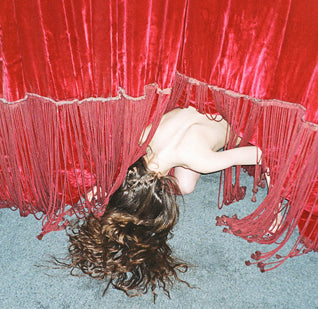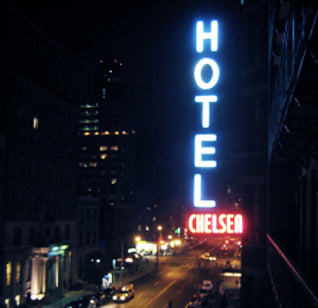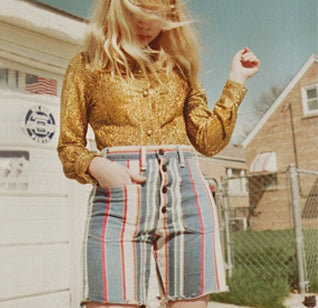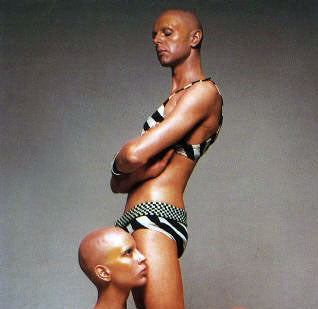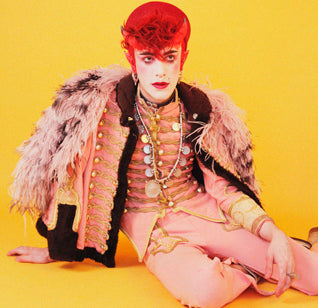AI WEIWEI: REVOLUTIONARY OR COMMODITY?
Has China succeeded in blunting the artist’s cynical edge?
by Peter Yeung
Ai Weiwei is a rare kind of artist, never before seen. Who else could fill England’s stately, picturesque Blenheim Palace with a sea of porcelain crabs, or Alcatraz prison with carpets made of lego? With his tightly cropped hair, grizzled, black and silver beard, pot belly, and imposing stature, Ai looks the part of an outsider. His army of followers is certainly testament to the inspirational influence he has had on Chinese citizens, and fellow protagonists abroad. But how long will this influence last?

Ai Weiwei in a still from his music video Dumbass
In many ways, Ai is the West’s dream: a staunch critic of the Chinese government, while working in the lineage of Western art history. He drives an outspoken wedge between these global powers. Perhaps that’s why the label “dissident-artist” has adhesively clung to the lionhearted 57-year-old, whose art making and philosophy is radically politicised, deeply cynical, and – at times – has a deeply nihilistic streak running through it. This sense of audacious unpredictability and fearless subversion marks Ai out as a sui generis contemporary global artist, and ensures that he remains a nagging thorn in the side of the world’s most powerful economy.

This is the photo, titled “One Tiger, Eight Breasts,” which was first tweeted by Ai Weiwei in 2010, was used by the Chinese authorities to charge the artist.
An intriguing suggestion made by the Smithsonian magazine is that Ai is China’s most dangerous person. The man born in Beijing, and brought up during the terrible, traumatic social-cleansing era of the Cultural Revolution, embodies paradoxes. His father, the admired poet Ai Qing, had a personal relationship Chairman Mao himself, yet Ai’s raison d’etre can almost be summed up as a challenge to the Chinese state – using artistic modernism to fiercely question socio-political status quos. The Chinese government tried to champion Ai – who helped design the “Bird’s Nest” stadium – during the 2008 Beijing Olympics, yet he continues to critique their oppressive practices.

The artist with one of his 40 cats
It’s Ai’s ability to re-appropriate this oppression to make art, along with his acerbic sense of wit and pitch-black humour that enlivens the Beijing artist’s work. In reaction to a brain haemorrhage-inducing police attack, for example, Ai created an ink-jet print of the MRI of his brain. Whereas, his ambitious Alcatraz exhibition allows visitors to sit in a tiny concrete cell and listen to the works of fellow dissidents, such as anti-Apartheid singers and anti-Soviet musicians whose work led to their imprisonment.

Ai Weiwei's giant Chinese paper dragon in Alcatraz, 2014
It is perhaps puzzling, then, that the man that was just a few years ago named by ArtReview as the most powerful artist in the world appears to have lost his cutting edge. Ai’s recent fashion collaboration with Dover Street Market, after V Magazine had asked him to photograph fourteen outfits for an editorial, doesn’t exactly have the same radical message as when the artist famously smashed priceless, millennia-old Han dynasty urns. Meanwhile, his appearance in the 2014 documentary “Marc Quinn: Making Wave”, featuring a whole scene where Ai and Quinn photograph each other on iPhones incessantly, risks caricaturing the previously revolutionary bastion, much in the same way that Marina Abramović has perilously flirted with celebrity, at the cost of artistic integrity.

The artist's collaboration with Dover Street Market
The fact that Ai had his passport confiscated three years ago and is under 24-hour house arrest and surveillance certainly goes some way to explaining the restrictions put on his artistic output. His recent international work has had to be explained and constructed through sketches and notes. Yet some of Ai’s recent missteps suggest that the Chinese state’s approach is working to an extent. They never quite know whether to treat Ai as an asset or dilemma, always fearing that he may become a martyr or symbol of the struggle for human rights in China, exposing their hypocritical rhetoric.

Ai Weiwei's defaced ancient Han dynansty urns
A telling sign, however, is the kneejerk reaction China often enacts. Just this month, a T-shirt about Ai Weiwei was banned from being sold. Playing on the fact that the Chinese character for Ai’s surname and “love” are homonyms, the slogan wittily proclaimed: “Love/ Ai Weiwei Can't Be Here". They know that this artist, who will utilise any medium (sculpture, found-objects, photography, performance, architecture, and tweets) remains a threat, even with his hands tied. With a major show announced at London’s Royal Academy next year, the question is, will this modern phenomenon become blunted, or will he return to his serrated, cynical edge?












